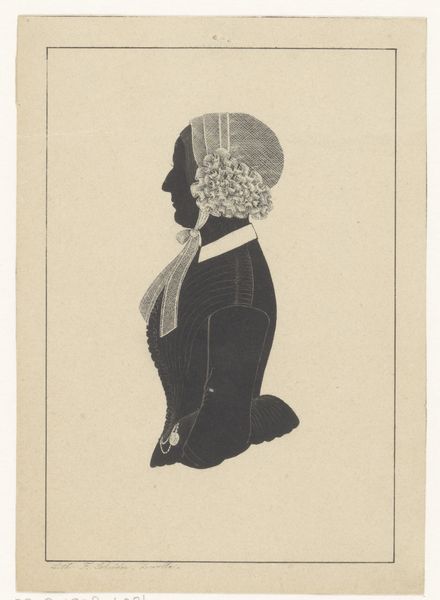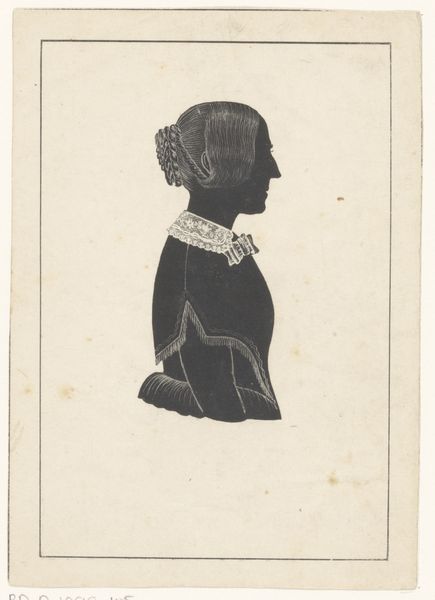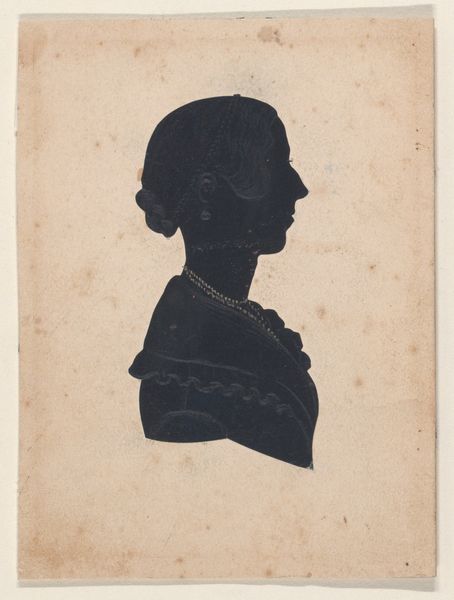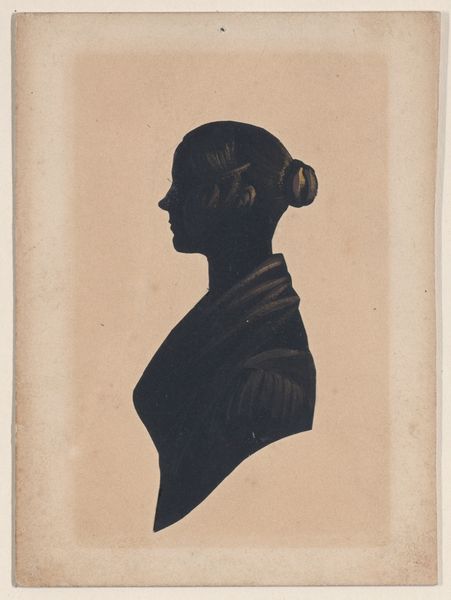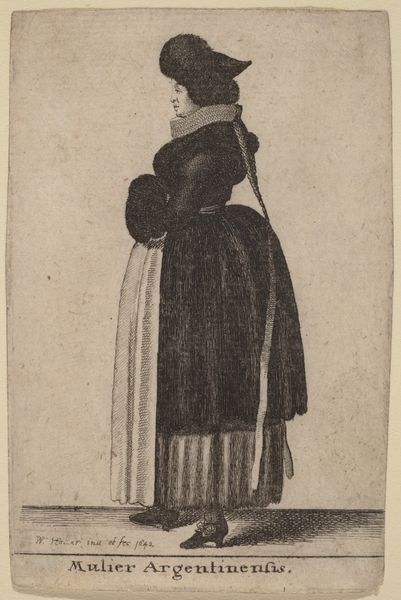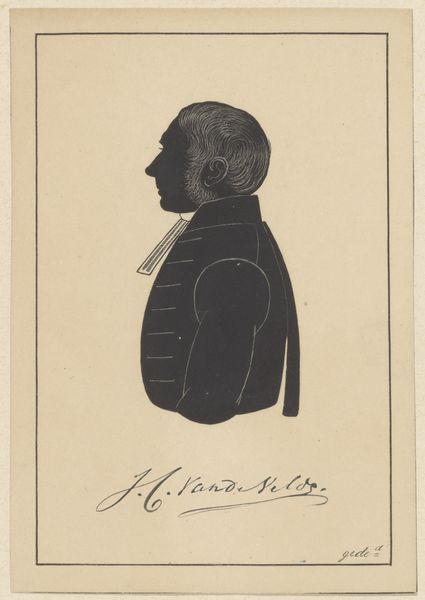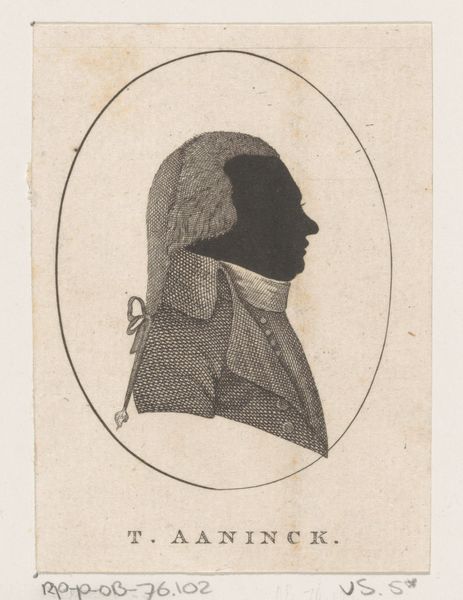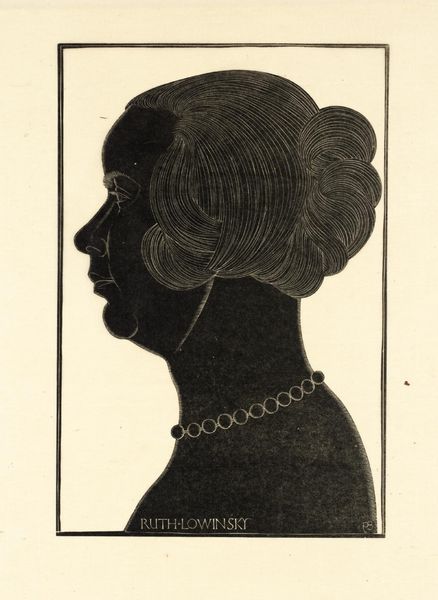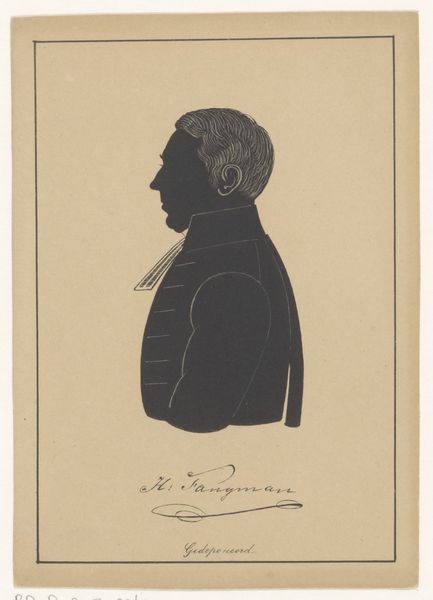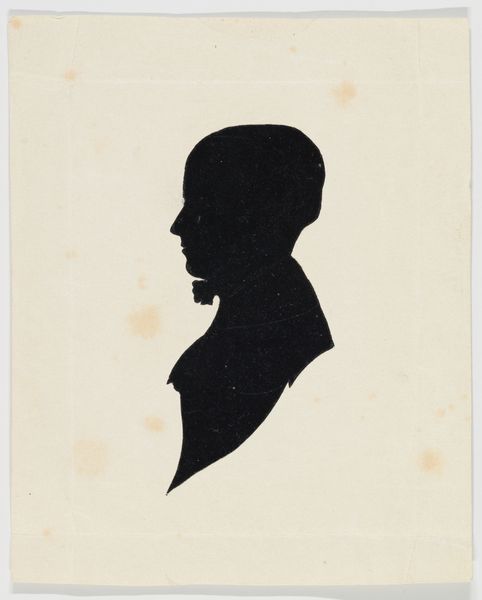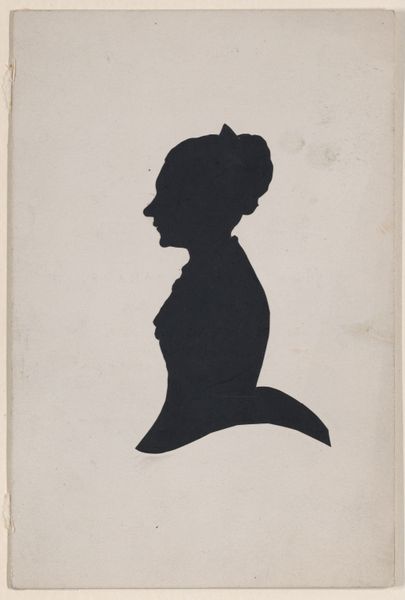
Silhouetportret van Helena Maria van den Bosch-Razoux 1844 - 1865
0:00
0:00
drawing, paper
#
portrait
#
drawing
#
caricature
#
paper
#
line
#
realism
Dimensions: height 150 mm, width 107 mm
Copyright: Rijks Museum: Open Domain
Editor: So, this silhouette portrait of Helena Maria van den Bosch-Razoux, dating from 1844 to 1865, is really striking in its stark simplicity. The rigid, almost severe lines of her dress create such a formal, composed mood. How do you interpret this work? Curator: It’s crucial to situate this silhouette within the social and political context of the 19th century. Consider the restricted roles of women during this era. Silhouettes, often more affordable than painted portraits, became a popular way for middle-class families to participate in image-making and self-representation. Who was Helena Maria within that social structure? The detail in her clothing hints at a certain status, yet the very nature of the silhouette flattens, almost democratizes her image. Editor: That’s fascinating, I hadn’t thought about the democratizing aspect. So, even though she likely held a certain social position, the silhouette makes her accessible in a way a traditional painted portrait might not? Curator: Precisely. Also, think about what isn't revealed. The sitter is anonymized by the silhouette's method, thus concealing those individual details. As such, the lack of individualized characteristics in the portrait reflects how societal expectations frequently overshadowed a woman’s identity in marriage or her domestic sphere during this period. This form of portraiture both reflects and critiques the suppression of female visibility in public life. What stories might the cut conceal, or even subvert? Editor: Wow, I never thought a simple silhouette could contain so many layers. I always considered the sitter in portraits as part of the upper-class, rather than someone affected by what wasn’t represented in portraits. Curator: Exactly. It's in the intersection of what is shown and what is withheld that this portrait’s political power resides. Editor: It makes you rethink about traditional ideas surrounding wealth and position. Thanks!
Comments
No comments
Be the first to comment and join the conversation on the ultimate creative platform.
